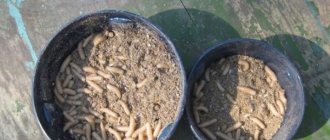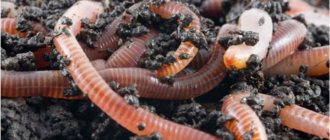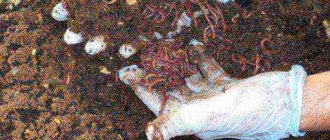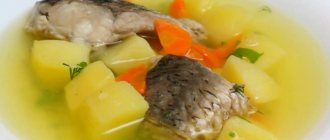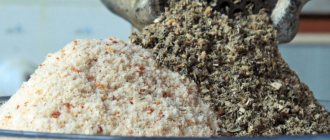Despite the fact that maggots can be purchased today in almost every fishing store, breeding them at home has not lost its relevance.
Firstly, not all stores offer maggots of adequate quality. Very often, having bought a bag of larvae, a fisherman discovers among the sawdust some maggots that have already pupated, and some that are loose and barely alive.
Before reaching the counter, maggots go through quite a long journey from the manufacturer through intermediaries, and along the way, the requirements for its storage are not always met. In many stores, maggots are regularly sorted out and sold, first of all, those that are, as they say, “living out their last days.”
Secondly, a fisherman who breeds maggots on his own can be absolutely sure of the purity and sterility of the larvae. And thirdly, home breeding of maggots can be economically profitable.
After all, maggots are used not only as bait, but also as an effective bait when fishing for carp, and in this case, you will have to buy it for hundreds of rubles, which not every angler can afford.
How to get maggots at home?
Breeding maggots yourself is not such a difficult and troublesome task as it might seem to someone at first glance. As for the “aesthetic” side of the issue, there are not much more problems here than, for example, when harvesting dung worms.
It is advisable to carry out all work with thin latex gloves, and keep starch, small sawdust or wheat bran on hand, which significantly simplify all operations with larvae.
For fishermen with a particularly sensitive sense of smell, we can also recommend a respirator. You can also use tweezers, preferably plastic ones.
Using an egg
One of the simplest ways is to breed larvae in a chicken egg. To do this, take a hard-boiled egg, cut off the top and leave it in places where flies gather.
It is not recommended to take a raw egg, as some authors advise - it does not spoil for a very long time and attracts few flies. Flies lay eggs in a boiled egg quite quickly, and in warm weather, within a week you can shake a small portion of maggots out of the shell.
A significant disadvantage of this method is the foul smell of hydrogen sulfide, which produces a rotten egg and a negligible yield of larvae from one egg.
In a bottle
It is much more convenient to breed maggots in a plastic bottle. There are many options here. The easiest way is to take a PET bottle (1.5-2 liters) and cut off its upper part so that you get a funnel.
This funnel is inserted into the cut part of the bottle. Flies will fly into the container through the neck. Bait for flies is placed in the cut part of the bottle - it can be fish, meat, or minced meat. A little sand and sawdust is immediately poured onto the bottom. It is not worth covering the nutrient substrate itself with sawdust. For example, meat covered with sawdust will begin to attract flies no earlier than a week later, since sawdust delays putrefactive processes and absorbs odors.
It is advisable to place the bottle in a secluded place so that it does not attract the attention of household members. Various country houses are ideal. In the city, of course, the only suitable place is a balcony. The bottle needs to be shaken periodically and checked to see if larvae have appeared. In summer they grow very quickly, and if you miss the moment, they will turn into pupae, or even adult flies.
Typically, the larvae grow to working size within 3-4 days after the flies lay eggs. You can delay their development by putting the bottle in a cool place. After the flies lay their eggs, the neck of the bottle needs to be covered with several layers of gauze, since not only fish love them, but also predatory little beetles, which can easily destroy your entire strategic supply of bait.
You can cover the bottle with a plastic bag, but not tightly. Rural fishermen should also not forget that rats are very fond of maggots.
In some articles there is a recommendation to place a piece of meat or fish directly in the funnel. According to the authors, maggots from the funnel should themselves fall to the bottom of the bottle as they grow.
In practice, most of the larvae often remain in the funnel, from where they can easily crawl out or become easy prey for little beetles.
The method itself, of course, has a right to exist, but in practice it is not as convenient and simple as they say about it. When the larvae grow up, they are removed from the bottle. Partially you can shake them out, for example, onto a newspaper, partially you have to pick them out with your hands from the remnants of meat or fish.
Do not forget that maggots spread quickly, so you cannot leave them unattended for even a minute. The maggots are poured from the newspaper into a jar and covered with sand mixed with sawdust. The jar is tightly closed with a lid and turned upside down. The maggots, having passed through a layer of sand and sawdust, will be cleaned and practically get rid of the unpleasant odor. After this, the jar is turned over to its normal position and the larvae are transferred to any suitable box with a tight lid.
Maggot in the bone
There is an old, original method of breeding maggots in bones. A raw, fresh tubular bone with remaining meat is taken. It's good if it has already started to deteriorate.
The bone is split with an ax, but not completely, but so that a crack forms in it. The bone is lightly sprinkled with earth or sand. Blue flies quickly lay eggs in it, and the larvae grow, feeding on the remains of the meat.
Numerous theorists argue that maggots will certainly crawl inside through the crack, and the fisherman will only have to shake them out before fishing from a “completely bare bone.”
In practice, only part of the maggots is taken inside the bone, while others remain outside. In addition, by the time the bone is completely eaten away, some of the maggots will already have time to pupate. Another disadvantage of this method is the absolute availability of both bones and maggots for the same little beetles, as well as larger predators.
Maggot in the liver
Much more reliable is another ancient method of breeding maggots - in a piece of liver. Using a sharp knife, cuts are made in the liver into which wooden splinters are inserted - spacers.
A piece of liver is placed in any suitable container (in old books they wrote “pot”) and covered with a cloth. Sawdust or its mixture with bran should also be poured into the bottom of the container.
In warm weather, the larvae usually appear on the 2-3rd day, after which it is important to monitor the process daily so as not to miss the moment when the maggot is “ready” for fishing. Instead of liver, you can use a piece of light or spoiled meat.
Maggot in fish
Of course, the simplest and most accessible for every fisherman is breeding maggots in fish. It is enough to simply spread the fish cut lengthwise in the open air.
In “flying” weather, a few hours will be enough for flies to lay eggs. After this, the fish is tightly wrapped in several layers of paper (newspaper will also do) and placed in a large glass jar with sawdust sprinkled on the bottom.
The jar can be closed with gauze, paper or a lid with holes. The holes should also be covered with gauze or paper. In the summer, after a few days, some of the maggots will begin to escape from the newspaper and crawl along the bottom of the jar. So it’s time to get ready to go fishing. A glass jar is convenient because you can visually control the process.
Maggot can also be obtained from salted fish. Any fisherman who has been drying fish has at least once in his life encountered the fact that, despite all the measures taken, flies managed to lay eggs in the hung fish.
It is these maggots that come out the densest and most elastic. Even a high concentration of salt does not harm them at all. “Salted” maggots grow a little longer than usual, but they are the largest and do not pupate for a long time.
In addition, they have virtually no characteristic unpleasant odor. Apparently, the preservative effect of salt is affecting. Perhaps this is one of the best ways.
Maggots from eggs
If you only need a little maggot, you can hatch it directly in the egg. Take a raw egg, carefully remove the top part, and mix the contents. A napkin or toilet paper is shredded and added there. To make it more convenient for the fly to sit down, a small mound of crumpled napkin is placed on top.
Now the egg can be sent to ripen in a warm place protected from the sun. In 5 days the mixture will dry out, the paper will stick together into a lump, and there will be maggots under it. To clean them, they are placed in sawdust, sand or cereal. The smell of a rotten egg is even stronger than the aroma of rotten meat, so it is better to move the process away from home.
Flavoring maggots
Natural maggot itself has a smell that is more than attractive to fish, but many fishermen cannot deny themselves the pleasure of experimenting and adding a new aroma to old bait.
You can use any flavorings - from the textbook anise oil and valerian to branded attractants that are sold in fishing stores.
You can simply spray the maggot with the selected flavoring agent, or you can moisten the sawdust in which it is located. A number of authors recommend boiling sawdust in water with added flavoring and then drying it.
The recommendation is more than controversial. Most flavorings are volatile substances and, when cooked, will either lose their aroma or completely evaporate. In addition, cooking followed by drying takes a lot of time and does not guarantee results. In general, it has been noticed that many fishermen flavor maggots not so much for the fish, but for themselves. This is understandable. After all, it is much more pleasant to bait a maggot on a hook, fragrant with the aroma of vanilla and coriander.
Pros and cons of maggot business
The main advantage of raising maggots yourself is the opportunity to get excellent bait that fish bite well, practically for free (for the price of a piece of meat or fish). It is easy to grow maggots, as well as to store them. Living larvae are very mobile, they easily attach to the hook and bend on it, thus luring fish.
Despite the ease of cultivation, not everyone is ready to raise larvae on their own, tolerate rotten meat, transplant maggots from it and wash them. Therefore, you can grow them not only for yourself and fellow fishermen, but also for sale. There are virtually no disadvantages in this business. With experience, the angler finds the most efficient way to grow and can produce a lot of bait. It is quite expensive and is not available in every fishing store.
The most important thing is to find regular sales channels. These could be familiar fishermen and aquarium fish owners, as well as stores.
Maggot is a special device where you can grow maggots with almost no contact with them
Coloring maggots
Stores, as a rule, sell not only naturally colored maggots, but also colored ones - most often red. You can paint maggots almost any color at home.
To this day, in print and online publications you can find recommendations for coloring maggots using highly complex technologies: degreasing, soaking and “washing” the larvae in various solutions, followed by coloring.
Most likely, such recommendations are nothing more than the fruits of the imagination of theorists, because any practicing fisherman knows that maggots always take on the color of the substrate on which they feed or are kept. All you need to do is purchase in a store, for example, an “Easter Egg Set” with multi-colored dyes - and you can start experimenting.
A dye of the desired color is added, for example, to a finely grated boiled egg or cottage cheese, and placed in a container containing maggots. In a few days you will get larvae of any color of the rainbow.
The dye can also be added to sawdust that contains maggots. Dyeing with this method takes longer and the color is less intense. For those opposed to food dyes, we can recommend, for example, finely grated beets. True, the color will not be too intense. However, food coloring does not cause any harm to maggots.
When using home methods for coloring maggots, it can always return to its natural color - just transfer it to clean sawdust or bran. After some time, it will gradually clear of paint. Industrially dyed maggots retain their artificial color under any conditions.
Technology for growing maggots
It’s not at all difficult to make a maggot from scrap materials. It consists of several parts. The containers are located one inside the other. There may be two or three. The top contains raw materials, the middle contains material for cleaning maggots from mucus, and the bottom collects clean maggots. If there are two tiers, then there is no intermediate container.
Raising maggots is not a very pleasant process. As a result, the bait has a more pronounced smell than larvae bought in a store. Experience shows that fish react better to it, so there is no point in trying to neutralize it. If you still want to eliminate it, then this can be done simply: pour a little industrial fish bait or crushed boilie into the substrate for storing maggots. The larvae will take on the scent of what you added.
The easiest way to make maggots is from a plastic bottle or five-liter canister. For small batches, plastic glasses with lids for fermented milk products are suitable. The design for breeding maggots is simple and can be made in a couple of minutes - the glasses are inserted one into the other, their size is selected so that there is free space between the bottom of one and the other.
Boiled maggot
In cases where it is not possible to keep maggot alive (for example, multi-day fishing in hot weather), they resort to boiling it. They cook maggots almost like dumplings, dipping them into boiling salted water (at the rate of 1 teaspoon of salt per half a glass of water).
As soon as the larvae begin to float, they are thrown onto a sieve and dried. Maggot preserved in this way can be used not only in summer, but also in winter by freezing it - it holds well on the hook.
However, it should be remembered that unlike, for example, jigsaw, which after cooking takes on the appearance of a boiled shrimp and sometimes becomes even more attractive to fish, boiled maggots cannot compete with fresh ones. It bites much worse than a live one.
Can humans eat maggots?
Recently we knocked down a yard puppy that was being fed by everyone around us. the children were playing with him... they knocked him down somehow strangely. as if crushed, he was still walking right away, there were no wounds. I witnessed the incident. Having examined the puppy, I thought it had passed. and then, the next day, I found him with through wounds (such as a fistula) on which flies had laid larvae. there were a lot of them... in shreds. The mother dog was cleaning, eating, licking... she didn’t know what to do with her two little children. one breast... how to treat it... I was thinking of taking it to the vet. mine didn’t want to do this. It was as if he was dying, but it’s been 3 days now, and he’s just being eaten alive. And I treated him as best I could.. and gave him water from a syringe. MJ said. that they’re already inside and you can’t save him, the skin has shrunk on his butt and the bones are sticking out... and tied it up, smeared it with Vishnevsky, because the flies are circling in a swarm... but I write on the net that if they got inside, and they have already gotten in, then that’s it, they eat from the inside... in short, I feel sorry for him, and there’s hardly anything you can do to help, but the question is: I came into contact with the dog. I washed my hands... but is it harmful if they suddenly get inside? the dog bit me. you never know...
Why didn’t they give you at least a tiny bit of antibiotics? Simple nystatin for fungi. Simple ciproflaxacin kills more than a dozen groups of microbes. Sadism does not decorate anyone! It would be better if they were dangerous for you specifically. For thoughtlessness and poor attitude towards animals. - 4 years ago
Why do so many people think it is necessary to condemn and scold? But I’ll answer your question: I don’t take antibiotics, and in general I have a negative attitude towards them. especially in the case of self-medication. - 4 years ago
Maggots are not dangerous for you, you will only get the infection if the puppy had something bad in his mouth (and this can happen), so you should still go to the doctor, especially if you feel worse after the bite. However, maggots do not pose a danger, especially considering that they were not the ones who bit you.
the author of the question chose this answer as the best
Thanks for answers. Unfortunately, the wounds were very serious, the puppy died, and no one could help him(( - 3 years ago
Fortunately for humans, maggots are not only not dangerous, they are even useful. Maggots are fly larvae. They are specially bred for catching fish with live bait. And even before the invention of antibiotics, they successfully closed open wounds in fighters and hunters. The fact is that this phenomenon is described in every biology textbook: maggots can only feed on dead tissue, simply pus, decomposed muscles. They clean the wound until it shines and calmly fall off. They can also be inside the dog’s body - if there are areas there that have died. But the maggots cannot stay there for long without oxygen and will soon crawl out in search of food and air.
Not dangerous. Since ancient times, maggots have been used to treat purulent wounds. Fly larvae, entering the wound, remove decaying tissue and clean the wound. The larvae were specially placed under a bandage on the wound to speed up healing.
Personally, they have never caused any harm to me, but fish bite on them very well. In winter, some fishermen thaw frozen maggots behind their cheeks, but I always just had them in my pocket (I mean when fishing). I was even told a story about how a certain character ate a sandwich with maggots in a bet for a bottle of vodka. I can’t believe it, because what eyewitnesses told me was my parents.
So, the puppy may still come to his senses; the fly larvae only contribute to this, and do not interfere.
If you think that such a social phenomenon as a club, in its aristocratic British understanding, has already outlived its usefulness in pragmatic America of the 21st century, then I will disappoint you. Belonging to elite clubs is becoming more and more part of the American Dream. And no one knows what this mysterious American Dream is, but everyone understands what we are talking about. Something like the air we breathe, but we can’t look at it, feel it, weigh it or measure it. Or money that seems to be there, but somehow it’s always, by and large, not there.
Two clubs of the Old and New Worlds are called the Forge of Presidents: Ivy League and Skull and Bones. The fate of the entire planet is decided in cozy restaurants, living rooms and quiet libraries, strictly guarded clubs shrouded in secrets. Masonic lodges look like kindergartens compared to these clubs. But shh... I didn't say anything like that.
Pickled maggot
Pickling maggots - so as not to write about this “amazing English method” - is a necessary measure that makes sense only in conditions when your supply of maggots has begun to deteriorate, and there is nowhere to get fresh ones.
The maggot is kept in a marinade containing about 10% vinegar for an hour and then slightly dried. You can add any flavorings to the marinade. Pickled maggots are stored very well, and that’s where all of its advantages over live ones end.
How to store maggots
As I already said, maggots are ready for sale in 7-8 days. After this period, you need to collect them for storage so that the larvae do not burrow into the sawdust to turn into pupae, from which flies will then be born. You can remove maggots by hand (with gloves on, of course!), or sift through a sieve.
After this, the larvae are scattered into jars with fresh wet sawdust and placed in refrigerators. The optimal storage temperature for larvae is from -40 to -20C. At this temperature, maggots can be stored for up to 1 month. During this period, the product must be fully sold, otherwise it will lose its attractiveness for both fish and fishermen.
Maggot pupa
Pupation of maggots is the most common problem when storing them. The main reason for pupation of larvae is too high a storage temperature.
As a rule, regularly sorting out maggots, many fishermen throw out the pupae as unnecessary, not even suspecting that this is a pretty good bait, especially when fishing for carp on a feeder.
The caster, as the pupa is called, is placed on a hook, usually as part of a sandwich with other baits. If you have a lot of pupated larvae, they should be added to the bait mixture - they have a strong odor that attracts fish no less than the maggot itself.
A completely blackened caster is also only suitable for bait, since it is almost impossible to attach it to a hook.
What is maggot
Before talking about money and prospects, it is worth understanding what this creature is. To attract fish you need to use good bait. Despite the emergence of modern fishing techniques and technologies, live bait fishing is the most popular, especially among conservative fishermen. It is the larvae that continue to be consistently popular with most fishermen. This factor explains the benefits that the process of breeding maggots implies. It is cheap in terms of cost, easy and profitable.
Refrigerator as a storage method
Storing maggots in the refrigerator is the most famous and accessible way. You need to keep it in a tightly closed box or special container, sprinkled with fine sawdust or bran.
Some fishermen use dry wheat or barley groats. Ventilation holes should be minimal - maggots can be easily removed even through the holes in standard “Saiver” type foam moths.
You can store bloodworms in containers without any ventilation at all - you just need to open them periodically. In stores, as you know, maggots are sold in plastic bags with latches, but they do not die.
Problems and their solutions
Breeding maggots at home poses two problems. It's the smell and the flies. If you have your own plot, then we simply take the container with the bait being prepared away from human eyes and noses. If you only have a balcony, then using meat and fish as raw materials is fraught with quarrels not only with household members, but also with neighbors.
For those who are interested in a way to grow maggots at home without smell and flies, there is a way out. You need to take a product that does not exude a stunning aroma. This is cottage cheese. It, like meat and fish, contains protein. One problem is that blow flies are not interested in its smell. This means, just like when fishing, we will use bait.
For this method you will need the following:
- Flake;
- Plastic cup;
- Cottage cheese;
- Meat or fish product for bait.
For reasons of hygiene, it is better not to use a working fish dryer. An unnecessary one will do. If there is none, then it is very easy to make a similar one from scrap materials. To do this, you can take a shoebox and cover it with gauze.
You need to put cottage cheese in a plastic glass, with meat, fish or liver on top to attract flies. Close the improvised fly feeder so that they can get into it. When the flies get inside the box, the meat is quickly removed and the gauze is pulled tightly.
Now the flies will not fly to the smell, and those remaining in the trap will lay eggs on the product that is available, that is, on cottage cheese. There will be no unpleasant odor. After about 5 days, the maggot in the cottage cheese will be ready and can be collected. It must be transferred to a container with sawdust. If they are not available, then cereals will do - wheat, semolina, corn.
Storing maggots in winter
The refrigerator is traditionally considered the ideal place to store maggots, but this is not entirely true. In order to preserve maggots all winter, it is necessary to maintain the temperature within 0 degrees, and the temperature in the refrigerator is usually +4, +5 degrees.
Of course, if pupation occurs at this temperature, it is very slow, but there may not be enough bait for the whole winter. In addition, storing maggots in the refrigerator often causes protest from some household members, who (totally in vain) see this as a threat to their health.
In such cases, you can make a “refrigerator” for the maggot from a box in which bottles with ice are placed. Bottles are replaced as the ice melts. In winter, such a “refrigerator” is placed, for example, on the floor near the balcony door.
A cooler bag is also a good option. If the maggot storage temperature is not lower than 0 and not higher than +3, then in a state of suspended animation it will be stored for as long as desired, but will instantly come to life in your warm hands while fishing.
How to breed maggots: the financial side of the issue
As for the financial side of the issue, it is extremely simple if you follow the general rules and conditions.
Initial capital
Business involves expenses only for renting premises (for a small room of 15 sq. m. an amount of 10,000 rubles per month is required), purchasing equipment (the amount is insignificant and amounts to about 5,000 rubles) and a few other small things (up to 3,000 rubles). There are virtually no sales costs, since such a product does not require bright outdoor advertising or advertising in the mass media. In total, the total starting costs consist of the purchase of the necessary equipment and materials (containers, sawdust, food for flies) and amount to 8,000 rubles.
Monthly costs
As for monthly expenses, they consist of expenses for renting premises (10,000 rubles), as well as the purchase of “consumables” in the amount of about 3,000 rubles. The total amount is 13,000 rubles.
Source: biztolk.ru
Some recipes for preparing maggots for fishing
Many fishermen not only use it for fishing, but also prepare it, which means that it can be painted in a more attractive color or scented. How true it is that fish begin to love it more after this is unknown, but you can share the recipe, since they really exist.
Flavoring maggots
To give maggots more pleasant odors, you can use various flavoring agents that moisten the sawdust and the maggot, which constantly rubs against them, acquires a more interesting smell. If you don’t want to spend money on “chemistry,” then you can flavor maggots according to the recipe of our grandfathers. To do this, you should use sawdust from non-coniferous trees and pour them into a pan and fill them with water in a ratio of 1:2. Before setting on fire, honey, vanilla, vegetable oil, drops of Corvalol, etc. are added to the mixture. In addition, you can add coriander, dill, hemp or garlic grains to the sawdust. Then put everything together on the fire and cook for 3 minutes. After this, the boiled sawdust is wrung out and dried, after which they can be used as bedding for maggots. Being in such sawdust, in a couple of days it will be saturated with such a smell and it will be much more pleasant to work with it.
Some fishermen who do not breed maggots, but buy them, do the following: grind the seeds together with the peel in a coffee grinder and add them to the maggot instead of sawdust. As a rule, they do this in the evening, and upon arrival at the reservoir, the next day, they have a distinct smell of seeds. This means sunflower seeds, but this operation can be carried out with grains of other plants, such as dill or hemp. If you think about it, it’s a very simple, affordable and effective way to flavor maggots.
Coloring maggots
Very often, fishermen paint maggots with iodine, brilliant green or potassium permanganate diluted in water. After such procedures, the larvae cease to be as active as before soaking, and sometimes leads to the death of some of the larvae. In addition, the maggot loses its original elasticity and does not hold well on the hook.
You can offer an alternative, but safer for maggots, staining method. It lies in the fact that the larvae acquire the required color during the feeding process. This technology is used in the conditions of industrial breeding of maggots, using special dyes that can change the color of the cellular tissues of maggots.
To obtain fly larvae of a non-traditional color, they need to be offered a special diet. The food remains in the maggot’s digestive system for quite a long time and will be visible through the thin skin, which will give it the desired color.
As an example, we can recommend the following: if you feed maggots with egg yolk, you can get a yellow tint to the larvae, and if you feed them with cottage cheese, the larvae will take on a milky white tint. At the same time, using cottage cheese for fattening larvae, you can achieve any shade by adding various dyes to the cottage cheese. Moreover, cottage cheese can be colored not only with “chemistry”, but also with natural dyes, such as beet juice, carrot juice, etc. The larvae can be painted in this way only during the fattening process, when the maggot is still actively feeding. After the larva refuses food, it will gradually begin to lose its color. The maggot is painted within 5-6 hours. That is, in the evening you can offer her colored food, and in the morning you can get larvae of the desired color.
Boiled and pickled maggots
It may happen that on a hot summer day the maggot begins to lose its mobility and begins to prepare for pupation. Some anglers believe that it should be thrown away in this case, but this is not the case. It can be given a second life. It might look like this.
